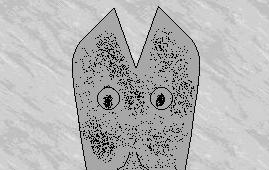The imposition of the death penalty on convicted UnaBomber Timothy McVeigh has resulted in calls to have his execution broadcast live on national television. If justice must be seen to be done, McVeigh must be publicly shown being punished for his heinous crime — saying bad things about modern technology. Who know? Perhaps his public execution will deter others from imitating his actions — we’ll see if Neil Postman has the guts to publish another book.
The only problem with broadcasting executions is that they are — let’s face it — not very good television. A lethal injection, for instance, is about as interesting to watch as somebody getting a needle. Not only that, but most forms of execution are over too quickly to create an exciting afternoon’s entertainment thanks to some dumbass rules about avoiding cruel and unusual punishment.
To make public executions work for television, some changes would have to be made. The addition of announcers, for instance. Who else would give us such pointless yet fascinating statistics as: “Warden Khan has a perfect 39 and 0 record with lethal injections, but is only 24 and 6 with the electric chair, Chuck, and a dismal 12 and 11 in hangings.”
We need colour announcers to give us the personal angle w otherwise wouldn’t get, like: “Warden Stalin’s heart hasn’t been in it since his daughter announced she had become a Scientologist and asked to borrow the family American Express card, Dick.” And, of course, only a truly gifted play-by-play announcer can help us better understand an event by stating the glaringly obvious: “250,000 volts — man, that’s gotta hurt!”
The addition of announcers is only the first step. For many, executing hardened criminals just isn’t sexy enough, so what could be more logical to add to the broadcast than cheerleaders? Between killings, they could chant classy cheers like: “Two, four, six, eight, who do we want to obliterate!” or “Sheriff Peckerhead — he’s our man, if he can’t fry ’em, no one can!” In deference to some people’s sensibilities, the cheerleaders would not actually be in the execution chamber (which would only lead to tragedy in cases of execution by poison gas); they could be in a nearby booth, replacing the witnesses made redundant by the television cameras.
Viewers would likely want a half-time show. After all, who could resist the Punkie Ramirez Senior High Marching Band and their salute to the guillotine, especially the climax where the brass section, representing the head, quickly moves away from the rest of the body?
The problem with half-time shows is that executions tend to be final, making half-time a logical impossibility. This could be remedied, however, by scheduling double and triple headers.
Broadcasting executions, you would want to use television technology to its fullest advantage. Thus, you could expect to hear things like: “At first, it looked like Warden Mengele was cool, calm and collected as he gave the signal to drop the pellets, but our super slo-mo reverse angle instant replay clearly shows hesitation on his part, Buck, hesitation that could have cost him.”
No afternoon’s entertainment would be complete without a post-execution show. For one thing, we’ve come to expect a round-up of the day’s activities (“In Texas, it’s Wardens 75, Criminals 2!”). For another, most of us do not believe what we have just seen on television until an expert has interpreted it for us (“Jim, I don’t believe I have ever seen a criminal kick as often or as long on the gallows as Malcolm Shubobz — man, that had to be some kind of record!”).
Yes, with a little tinkering, we’re talking about television history. Of course, some people may find such a program tasteless. But, hey — I didn’t come up with the idea of televising executions. I just want to make sure they don’t die in the ratings.


